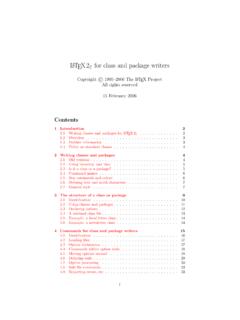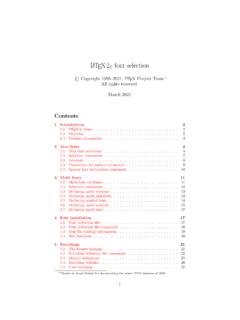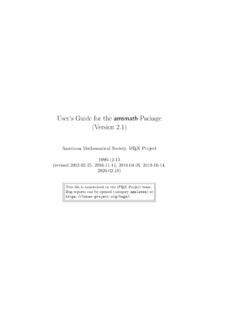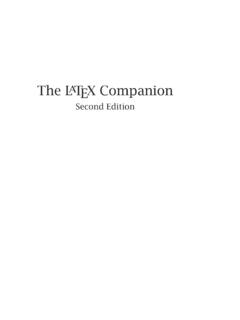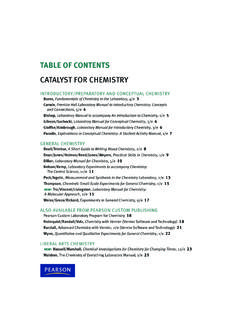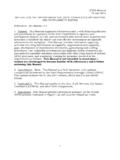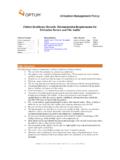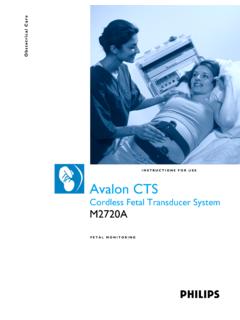Transcription of LaTeX2e for authors
1 LATEX 2 for authorsc Copyright 1995 2019, LATEX3 Project rights January 2019 Contents1 LATEX 2 The new LATEX release .. LATEX3 The long-term future of LATEX .. Overview .. Further information ..42 Classes and What are classes and packages? .. Class and package options .. Standard classes .. Standard packages .. Related software ..83 Initial commands .. Preamble commands .. Document structure .. Definitions .. Boxes .. Measuring things .. Line endings .. Controlling page breaks .. Floats .. Font changing: text .. Font changing: math .. Ensuring math mode .. Setting text superscripts .. Text commands: all encodings.
2 Text commands: the T1 encoding .. Logos .. Picture commands .. Old commands .. 2414 LATEX Warning .. Font selection problems .. Native mode .. 265 Local modifications266 New error messages .. Old internal commands .. Old files .. Where to go for more help .. 307 Enjoy!301 IntroductionWelcome to LATEX 2 , the new standard version of the LATEX Document Prepa-ration document describes how to take advantage of the new features of LATEX,and how to process your old LATEX documents with LATEX 2 . However, thisdocument is only a brief introduction to the new facilities and is intended forauthors who are already familiar with the old version of LATEX. It isnotareference manual for LATEX 2 nor is it a complete introduction to is somewhat of an historical document now, since LATEX 2 came into existencein LATEX 2 The new LATEX release(well, for more than 10 years now)The previous version of LATEX was known as LATEX Over the years manyextensions have been developed for LATEX.
3 This is, of course, a sure sign of itscontinuing popularity but it has had one unfortunate result: incompatible LATEX formats came into use at different sites. This included standard LATEX ,LATEX built with theNew Font Selection Scheme(NFSS),SliTEX,AMS-LATEX,and so on. Thus, to process documents from various places, a site maintainerwas forced to keep multiple versions of the LATEX program. In addition, whenlooking at a source file it was not always clear for which format the documentwas put an end to this unsatisfactory situation, LATEX 2 has been produced; itbrings all such extensions back under a single format and thus prevents the pro-liferation of mutually incompatible dialects of LATEX With LATEX 2 the new font selection scheme is standard and, for example,amsmath(formerlytheAMS-LATEX format) orslides(formerly theSliTEX format) are simply ex-tensions, which may be loaded by documents using the same base introduction of a new release also made it possible to add a small numberof often-requested features and to make the task of writing packages and LATEX3 The long-term future of LATEXLATEX 2 is the consolidation step in a comprehensive reimplementation of theLATEX system.
4 The next major release of LATEX will be LATEX3, which willinclude a radical overhaul of the document designers and package writers in-terface to is a long-term research project but, until it is completed, the projectteam are committed to the active maintenance of LATEX 2 . Thus the experi-ence gained from the production and maintenance of LATEX 2 will be a majorinfluence on the design of LATEX3. A brief description of the project can befound in the you would like to support the project then you are welcome to send donationsto the LATEX3 Project Fund; this has been set up to help the research team byfinancing various expenses associated with this voluntary work of maintainingthe current LATEX and developing fund is administered by The TEX Users Group and by various local usergroups.
5 Information about making donations and joining these groups is avail-able from: LATEX3 project has its home page on the World Wide Web at: page describes LATEX and the LATEX3 project, and contains pointers to otherLATEX resources, such as the user guides, the TEX Frequently Asked Questions,and the LATEX bugs articles covering aspects of the LATEX3 project are also available for anony-mous ftp from the Comprehensive TEX Archive, in the directory:ctan:info/ltx3pubThe that directory contains an abstract of each of the OverviewThis document contains an overview of the new structure and features of isnota self-contained document, as it contains only the features of LATEX which have changed since version You should read this document in con-junction with an introduction to 2contains an overview of the new structure of LATEX documents.
6 Itdescribes how classes and packages work and how class and package op-tions can be used. It lists the standard packages and classes which comewith 3describes the new commands available to authors in LATEX 2 .Section 4shows how to process old LATEX documents with LATEX 2 .Section 6contains advice on dealing with problems you may encounter in run-ning LATEX 2 . It lists some error messages which are new in LATEX 2 andit describes some of the more common problems and how to cure them,or where to find further Further informationFor a general introduction to LATEX, including the new features of LATEX 2 , youshould readLATEX: A Document Preparation Systemby Leslie Lamport [4].A more detailed description of the new features of LATEX, including an overviewof more than 200 packages and nearly 1000 ready to run examples, is to befound inThe LATEX Companionsecond editionby Frank Mittelbach and MichelGoossens [5].
7 Packages and programs for producing and manipulating graphics are discussedat length inThe LATEX Graphics Companionby Michel Goossens, SebastianRahtz and Frank Mittelbach [1].Solutions for publishing with LATEX on the World Wide Web are given inTheLATEX Web Companionby Michel Goossens and Sebastian Rahtz [2].For more information about the many new LATEX packages you should read thepackage documentation, which should be available from the same source as yourcopy of are a number of documentation files which accompany every copy ofLATEX. A copy ofLATEX Newswill come out with each six-monthly release ofLATEX; it will be found in the filesltnews*.tex. The class- and package-writer sguideLATEX 2 for Class and Package Writersdescribes the new LATEX featuresfor writers of document classes and packages; it is The guideLATEX 2 Font Selectiondescribes the LATEX font selection scheme for class- andpackage-writers; it is Support for Cyrillic languages in LATEXis described inCyrillic languages support in documented source code (from the files used to produce the kernel ) is now available asThe LATEX 2 Sources.
8 ] This very largedocument also includes an index of LATEX commands. It can be typeset fromthe LATEX thebasedirectory, using the source files andthe class this more information about TEX and LATEX, please contact your local TEX UsersGroup, or the international TEX Users Group (see page 3).42 Classes and packagesThis section describes the new structure of LATEX documents and the new typesof What are classes and packages?The main difference between LATEX and LATEX 2 is in the commands before\begin{document}.In LATEX , documents hadstyles, such asarticleorbook, andoptions, suchastwosideorepsfig. These were indicated by the\documentstylecommand:\documentstyle[ options ]{ style }For example, to specify a two-sided article with encapsulated PostScript figures,you said:\documentstyle[twoside,epsfig]{arti cle}However, there were two different types of document style option:built-in op-tionssuch astwoside; andpackagessuch These were verydifferent, since any LATEX document style could use theepsfigpackage but onlydocument styles which declared thetwosideoption could use that avoid this confusion, LATEX 2 differentiates between built-in options andpackages.
9 These are given by the new\documentclassand\usepackagecom-mands :\documentclass[ options ]{ class }\usepackage[ options ]{ packages }For example, to specify a two-sided article with encapsulated PostScript figures,you now write:\documentclass[twoside]{article}\u sepackage{epsfig}You can load more than one package with a single\usepackagecommand; forexample, rather than writing:\usepackage{epsfig}\usepackage{m ulticol}you can specify:\usepackage{epsfig,multicol}5 Note that LATEX 2 still understands the LATEX \ command causes LATEX 2 to enterLATEX compatibility mode, whichis described in Section should not, however, use the\documentstylecommand for new documentsbecause this compatibility mode is very slow and the new features of LATEX 2 are not available in this help differentiate between classes and packages, document classes now Packages still end , since most LATEX work well with LATEX 2.
10 Class and package optionsIn LATEX , only document styles could have options such astwosideordraft. In LATEX 2 , both classes and packages are allowed to have options. Forexample, to specify a two-sided article with graphics using thedvipsdriver,you write:\documentclass[twoside]{article}\u sepackage[dvips]{graphics}It is possible for packages to share common options. For example, you could, inaddition, load thecolorpackage by specifying:\documentclass[twoside]{artic le}\usepackage[dvips]{graphics}\usepacka ge[dvips]{color}But because\usepackageallows more than one package to be listed, this canbe shortened to:\documentclass[twoside]{article}\usep ackage[dvips]{graphics,color}In addition, packages will also use each option given to the\documentclasscommand (if they know what to do with it), so you could also write:\documentclass[twoside,dvips]{arti cle}\usepackage{graphics,color}Class and package options are covered in more detail inThe LATEX Companionand inLATEX 2 for Class and Package Standard classesThe following classes are distributed with LATEX:articleThearticleclass described inLATEX.
